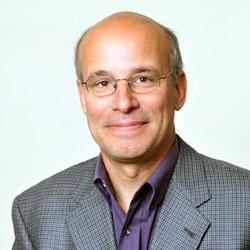
John Chiorini, Ph.D.
Senior Investigator
Adeno-Associated Virus Biology Section
NIDCR
Acting Scientific Director
NIDCR
Research Topics
Adeno-associated virus (AAV) vectors have several characteristics that make them attractive agents for gene therapy, including stability, ease of manipulation, low immunogenicity, and the ability to direct long term expression of transgenes. The overall research goal of Dr. Chiorini’s AAV Biology Section is to define the interactions of AAV with its target cell. By understanding these interactions and the biology of the virus, vectors with enhanced activity can be developed and existing vectors can be more finely targeted to specific applications.
Ongoing projects are looking at possibilities to use these vectors to treat diseases with unmet clinical need. Of special interest, are vectors that can target diseases of the salivary gland including radiation induced xerostomia and Sjögren's disease. In addition to developing gene therapy vectors targeted to the salivary gland, research projects investigate the etiology and epigenetic regulation of salivary gland dysfunction.
A Peek Inside the Chiorini Lab
Biography
Dr. John (Jay) Chiorini received a B.A. in biochemistry and molecular biology from the University of California, Santa Cruz, and a Ph.D. in genetics from George Washington University. Dr. Chiorini completed postdoctoral training fellowships at both the National Institute of General Medical Sciences in the pharmacology research and training program, and at the National Heart, Lung, and Blood Institute at NIH. As a postdoctoral fellow, Dr. Chiorini’s research focused on the role of the Rep proteins in AAV replication and the virus lifecycle. He cloned some of the first non-AAV2 serotypes, including AAV4 and AAV5. Dr. Chiorini joined NIDCR in 1999 and currently serves as Acting Scientific Director for the Division of Intramural Research and Chief of the Adeno-Associated Virus Biology Section. Findings from his group’s research are in clinical development and early stage clinical trials at NIH and around the world.
Selected Publications
- Lai Z, Yin H, Cabrera-Pérez J, Guimaro MC, Afione S, Michael DG, Glenton P, Patel A, Swaim WD, Zheng C, Nguyen CQ, Nyberg F, Chiorini JA. Aquaporin gene therapy corrects Sjögren's syndrome phenotype in mice. Proc Natl Acad Sci U S A. 2016;113(20):5694-9.
- Yin H, Cabrera-Perez J, Lai Z, Michael D, Weller M, Swaim WD, Liu X, Catalán MA, Rocha EM, Ismail N, Afione S, Rana NA, Di Pasquale G, Alevizos I, Ambudkar I, Illei GG, Chiorini JA. Association of bone morphogenetic protein 6 with exocrine gland dysfunction in patients with Sjögren's syndrome and in mice. Arthritis Rheum. 2013;65(12):3228-38.
- Nakamura H, Tanaka T, Pranzatelli T, Ji Y, Yin H, Perez P, Afione SA, Jang SI, Goldsmith C, Zheng CY, Swaim WD, Warner BM, Hirata N, Noguchi M, Atsumi T, Chiorini JA. Lysosome-associated membrane protein 3 misexpression in salivary glands induces a Sjögren's syndrome-like phenotype in mice. Ann Rheum Dis. 2021.
- Weller ML, Gardener MR, Bogus ZC, Smith MA, Astorri E, Michael DG, Michael DA, Zheng C, Burbelo PD, Lai Z, Wilson PA, Swaim W, Handelman B, Afione SA, Bombardieri M, Chiorini JA. Hepatitis Delta Virus Detected in Salivary Glands of Sjögren's Syndrome Patients and Recapitulates a Sjögren's Syndrome-Like Phenotype in Vivo. Pathog Immun. 2016;1(1):12-40.
- Baum BJ, Alevizos I, Zheng C, Cotrim AP, Liu S, McCullagh L, Goldsmith CM, Burbelo PD, Citrin DE, Mitchell JB, Nottingham LK, Rudy SF, Van Waes C, Whatley MA, Brahim JS, Chiorini JA, Danielides S, Turner RJ, Patronas NJ, Chen CC, Nikolov NP, Illei GG. Early responses to adenoviral-mediated transfer of the aquaporin-1 cDNA for radiation-induced salivary hypofunction. Proc Natl Acad Sci U S A. 2012;109(47):19403-7.
Related Scientific Focus Areas



Molecular Biology and Biochemistry
View additional Principal Investigators in Molecular Biology and Biochemistry
This page was last updated on Monday, July 7, 2025